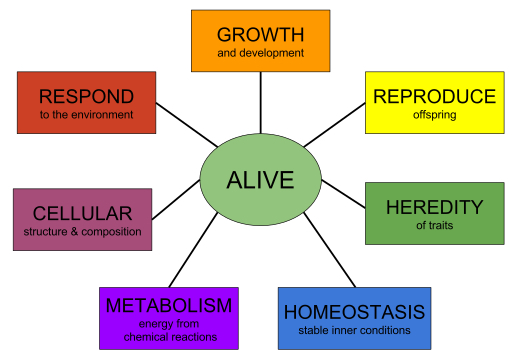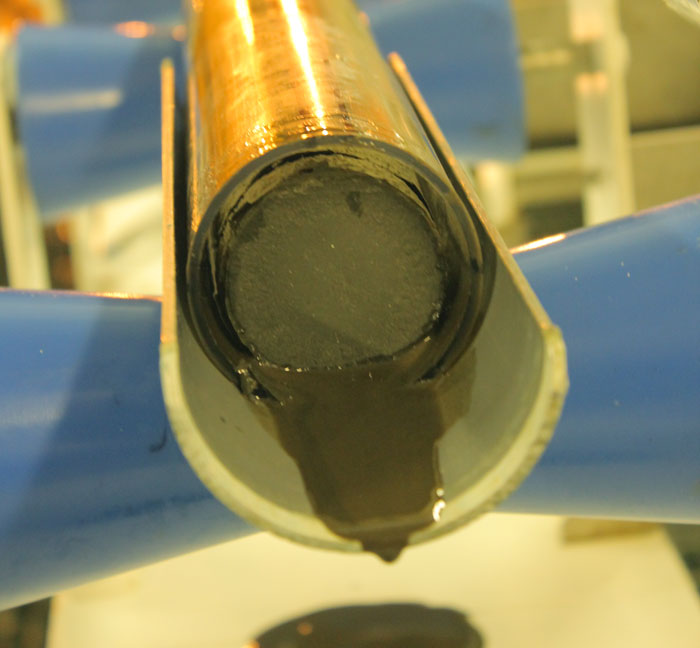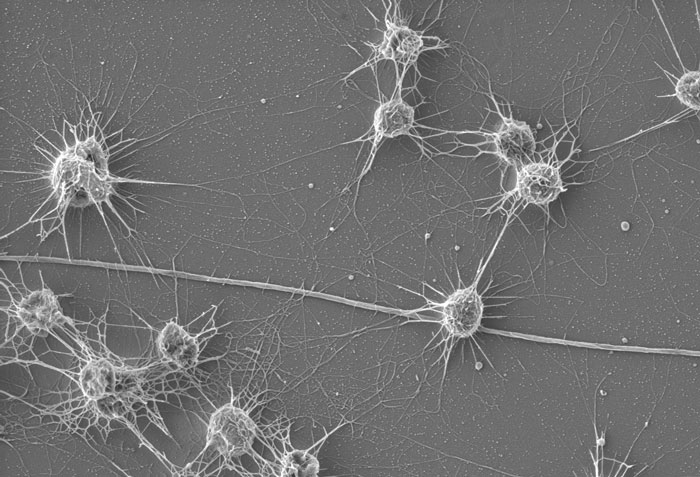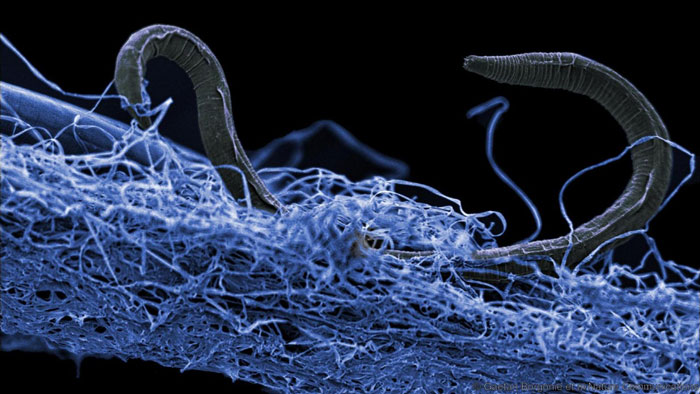Life seems like an easy thing to define.
Plants and fungi grow. Animals move around. These things all respond to changes in their environment and reproduce. In fact, here's a super handy chart that we found on Wikipedia just now...

This checklist has remained unchanged for a very long time. But something that is changing? The place where we most expect to find that life.
Case in point? For 10 years, an international collection of scientists have been drilling into the environments deep within our earth, searching for life. And they're finding it, too! Super-tiny microbes that live without air or sunlight, almost no food source, and at temperatures that we would find unbearable.
And even more amazing? These microbes appear to be able to live for thousands of years ...
Ahhh!! Zombies!!

This is a core sample—a section of earth taken from deep underground and then analyzed for life. (Luc Riolon/JAMSTEC)
This creepy longevity has led researchers to call some of these microbes "zombies". But these things aren't the undead. They're genuine living things—potentially thousands of different species of bacteria, archaea, and other microbes—and they live in a place known as the deep biosphere. Let's start there, shall we?
The deep biosphere, or deep earth, is exactly what it sounds like. These are environments that are literally miles under the surface of the Earth. In fact, to examine these microbes, scientists have drilled up to five kilometers (3.1 miles) underground. Earth samples have been taken from locations all across the planet. And everywhere they have looked—despite the immense pressure and heat in these locations—they have found these microorganisms.
How do they live? Very slowly.
Slow it down, buddy

An underground species of archaea, microbes that are similar to bacteria. (Christine Moissl-Eichinger–Medical University of Graz, Austria)
By that, we mean that the biological processes—especially the metabolism—of these microbes are almost unrecognizably slow. Think of it as the reverse of animals like mice—a mammal that has a very high heart rate, but which also lives a very short life. These microbes have metabolism that uses very little energy—they almost appear dead (again, hence the "zombie" tag). Using so little energy allows them to live almost indefinitely. It's a little like permanent hibernation.
We'd say that this is a boring way to live, but then again, they do already live miles underground in total darkness. It's not as though they're in danger of missing the latest Avengers film.
Oxygen, schmoxygen
Another thing that they're not missing? Oxygen.
Instead, these microbes appear to use hydrogen as we use oxygen. Researchers believe that this might mean that these species of microbes date back to the start of ancient life on Earth—a time when the atmosphere was mainly made of hydrogen.
If so, how did they get so far underground? Were they always this "slow", or did that evolve over time? Scientists are only just beginning to learn about them. But one thing that they do believe? The area of deep biosphere on Earth is about twice the volume of all the oceans. This means that these tiny creatures could actually be some of the most numerous living things in the world!
So what do you think? Are you and your friends ready to move to a new home in the deep earth? (Yeah, we aren't either!)
 Hi there! I'm a nematode. My name is Jim, and I live 1.4 kilometres underground! (Gaetan Borgonie)
Hi there! I'm a nematode. My name is Jim, and I live 1.4 kilometres underground! (Gaetan Borgonie)










🙂